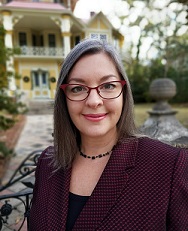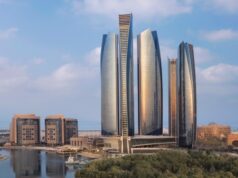
Sustainability, like any major change initiative, is dependent on executive sponsorship, but the focus on top leadership buy-in can be skewed. Executive sponsorship is no doubt vital; projects without it have lackluster results and high resentment. So much time is invested wooing executives, but initiatives become watered down by the time they reach managers and frontline employees.
This is where it becomes the “because I said so” methodology of change. Note that “I” may be replaced with the name that carries weight or power. If Steve is the CEO, then the mantra might become something like “well, Steve said this was important.”
Nothing makes me crazier than being told to do something without being told why. Not everyone is wired this way. Some are content to carry out orders in a diligent and dignified manner simply out of respect for structure and hierarchy, or to get food on the table. But most of us need to understand why we are being asked to do something before we are willing to invest the effort and emotion to comply.
Get past the “because I said so” status by constantly and consistently reinforcing the vision and goals for sustainability—not just the nuts and bolts, but the reasons behind the policy, the stories and the data. The why can make differences, such as:
- The why is inspiring. It should tap into passion and intrinsic motivation. If servers are asked to scrape uneaten food into a composting bin, they will do the task as instructed. But would it not be more inspiring to see a poster near the compost bin with a simple depiction of the effect of this simple act?
- The why is identifying. It should tie back to your organization’s mission, values, and brand. The Philadelphia Eagles’ stadium changed toilet paper suppliers because they discovered their old vendor sourced from forests that were habitats for bald eagles.
- The why is informative. It should expose opportunities for improvement and innovation. A traditional, physical carpet sample is made of one quart of oil, and uses more than 2 gallons of water and nearly 6,000 BTUs of energy in production. An architecture firm explained this to their designers, who began to change processes to reduce physical samples in favor of digital alternatives.
- The why is illuminating. It should shed light on social and environmental issues employees may not be aware of. The more they know, the more they can convey the importance and relevance of changes to stakeholders. An executive chef decided to source only Fair Trade chocolate. He showed staff a documentary on child labor in the cocoa supply chain, so they had a better attitude and approach when dealing with guest pushback on higher dessert prices.
- The why is indicating. It points us in the right direction when we face problems or trade-offs that don’t fit neatly into policy boundaries. When selecting next year’s conference location, an event planner has to weigh and compare many options related to sustainability. It helps to know which reduction target is the top priority: carbon emissions, waste to landfill, or water consumption? These can sometimes be mutually exclusive.
The sustainability why invites deeper employee engagement with the vision, goals, and policies. It provides context, purpose, and is far superior to “because I said so” as a reason to change.
Aurora Dawn Reinke is a sustainability consultant and speaker. Aurora’s firm, Astrapto LLC, guides owners and management teams through change by establishing a vision and strategy for sustainability; demonstrating the business case; engaging, empowering, and equipping stakeholders to achieve the vision; and formalizing and codifying sustainable processes. In July 2017, Aurora will graduate with a Doctorate in Business Administration in Social Impact Management. She is a Certified Sustainability Associate from the International Society of Sustainability Professionals and a LEED Green Associate.







